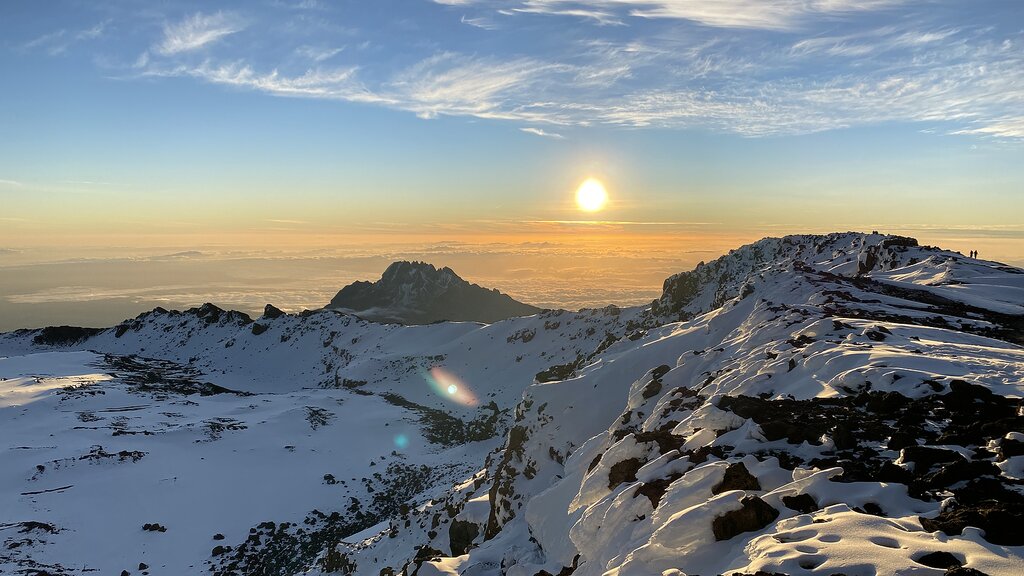
January is shoulder season in Tanzania, meaning you can expect thinner crowds at popular safari spots and some good deals on accommodation and flights. The weather is generally hot, and although there will be a chance of rain, this is an excellent month to visit if you’d like to see baby wildebeest and have fair conditions for safari activities.
Tanzania in January: A Comprehensive Travel Guide
Tanzania, a land of vibrant culture and breathtaking landscapes, offers a unique travel experience in January. This comprehensive guide delves into the weather conditions, crowd levels, destination highlights, and activities available during this time, allowing you to plan an unforgettable Tanzanian adventure.
Weather in Tanzania during January
Tanzania enjoys a tropical climate, resulting in fairly consistent temperatures throughout the year. The average temperatures on the lowlands and along the coast generally range from 77°F to 86°F (25°C–30°C), providing a warm and inviting atmosphere. In the highlands, the temperatures are somewhat cooler, averaging around 59°F–68°F (15°C–20°C). Altitude and rainfall are the most influential weather factors. January falls between the short rainy season (November and December) and the long rainy season (April to May), making it a relatively dry month. However, it’s important to note that the possibility of rain exists across the country, especially during the nighttime hours. The period from November to March is frequently called the “green season,” a time when the landscapes are lush and vibrant, nourished by seasonal showers.
Crowd Levels and Costs in January
January represents the shoulder season for tourism in Tanzania. This means that while you should anticipate encountering other travelers, the crowds will be significantly less dense than during the peak season, which spans from June to October. The advantage of traveling in the shoulder season is that you are unlikely to experience the closure of accommodations or restaurants, a phenomenon that is more common during the off-season. Furthermore, you may be able to find appealing deals on safari accommodations and activities, as well as at beach resorts, particularly later in January. It is worth noting that prices may still be at their high-season levels earlier in the month, especially at beach resorts, due to the influx of tourists who travel during the Christmas and New Year holidays in late December. Careful planning and research can help you secure the best value for your travel budget.
Where to Go in Tanzania in January
January, particularly later in the month, marks the beginning of the wildebeest calving season on the Ndutu Plains, the Ngorongoro Conservation Area, and the southern reaches of the Serengeti National Park in northern Tanzania. This is a truly extraordinary spectacle for wildlife enthusiasts. While Tanzania offers diverse wildlife experiences throughout the year, if you are visiting in January, a safari to witness the wildebeest calving should undoubtedly be at the top of your itinerary.
In addition to wildlife viewing, January provides excellent conditions for enjoying the beaches of Zanzibar. This semi-autonomous region is a true jewel of Tanzania, famed for its dazzling white-sand beaches, pristine blue waters, and a unique cultural blend that has absorbed many influences over the course of centuries. The weather in coastal regions is hot in January, and rainfall is relatively low, which creates ideal conditions for swimming, sunbathing, and other water activities. Divers will be especially thrilled, as underwater visibility can reach up to 98 feet (30 m), providing incredible opportunities to explore the vibrant marine life.
Things to Do in Tanzania in January
Mount Kilimanjaro, situated in northeastern Tanzania, stands as the tallest mountain in Africa, reaching an impressive height of 19,340 feet (5,895 m). The optimal time to climb Mount Kilimanjaro is during the dry season, and January falls within this period. While temperatures will be cold at higher altitudes, January is generally one of the warmest months of the year, making it an excellent time to attempt to summit the mountain. Climbs typically take between five and ten days, depending on the chosen route and the number of days allocated for acclimatization.
Climbing Mount Kilimanjaro is a rewarding challenge for passionate hikers, and it is often regarded as a non-technical climb, sometimes referred to as a “walk-up.” However, it is crucial not to underestimate the challenge, as altitude can significantly affect climbers, regardless of the gradient. Regardless of the number of days it takes to reach the summit, you will be rewarded with breathtaking views across Tanzania and potentially into Kenya, in addition to the chance to observe wildlife at lower altitudes and hike through diverse vegetation and terrain.
Events in Tanzania in January
Wanyambo Festival, Dar es Salaam: Immerse yourself in Tanzanian culture at the Wanyambo Festival in Dar es Salaam. This vibrant cultural event features traditional dancers, a diverse array of food and drink, and displays of traditional instruments, art, and crafts. It is a wonderful opportunity to experience the rich heritage of Tanzania.
Exploring Tanzania in January offers a unique blend of wildlife encounters, beach relaxation, and cultural immersion. Whether you’re drawn to the calving season in the Serengeti National Park or the pristine beaches of Zanzibar, Tanzania provides an unforgettable travel experience during this time of year. Don’t forget the chance to challenge yourself with a climb of Mount Kilimanjaro, a trek that promises stunning views and a profound sense of accomplishment. With careful planning and preparation, your January adventure in Tanzania will be a journey of a lifetime.
B-2569
